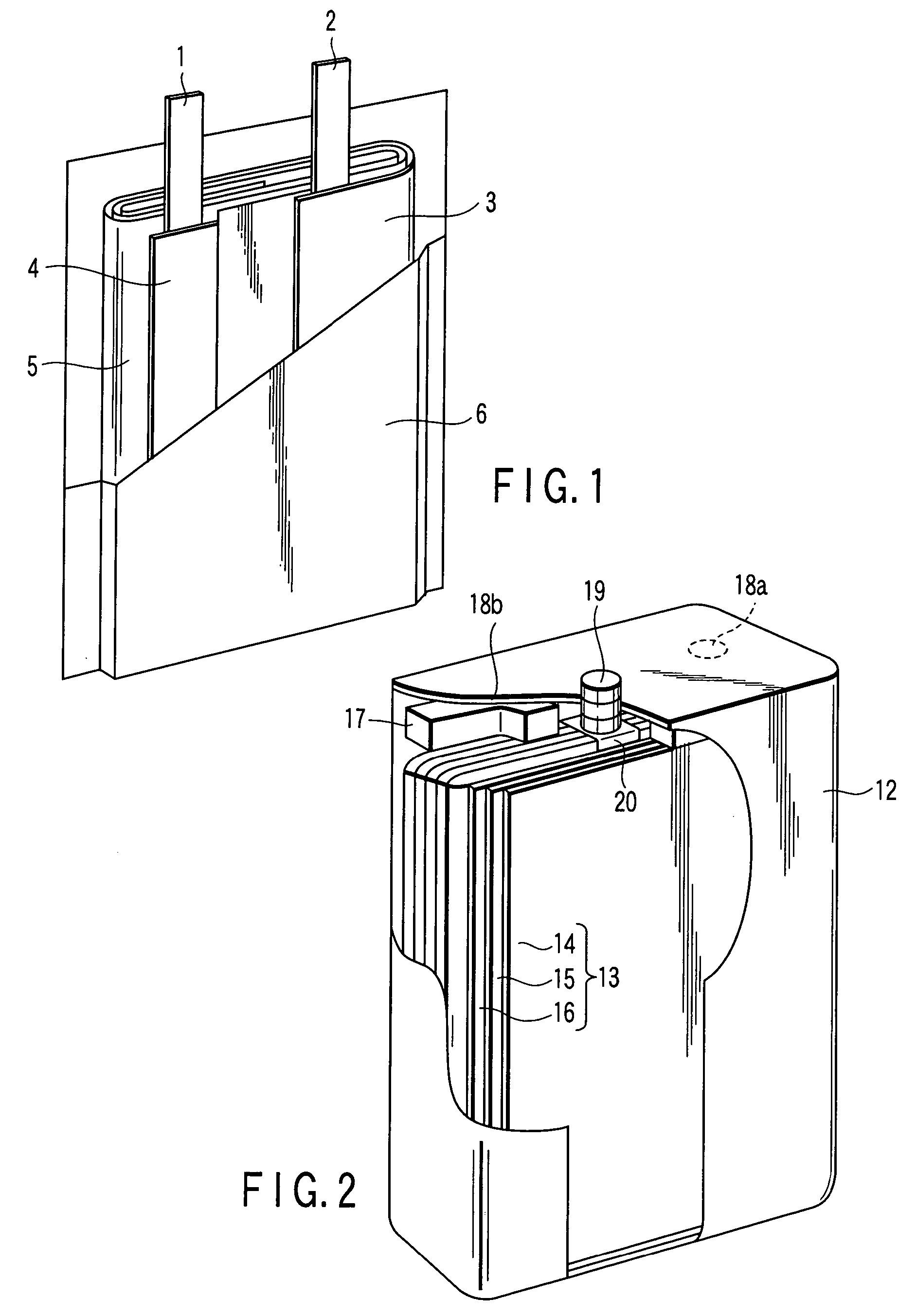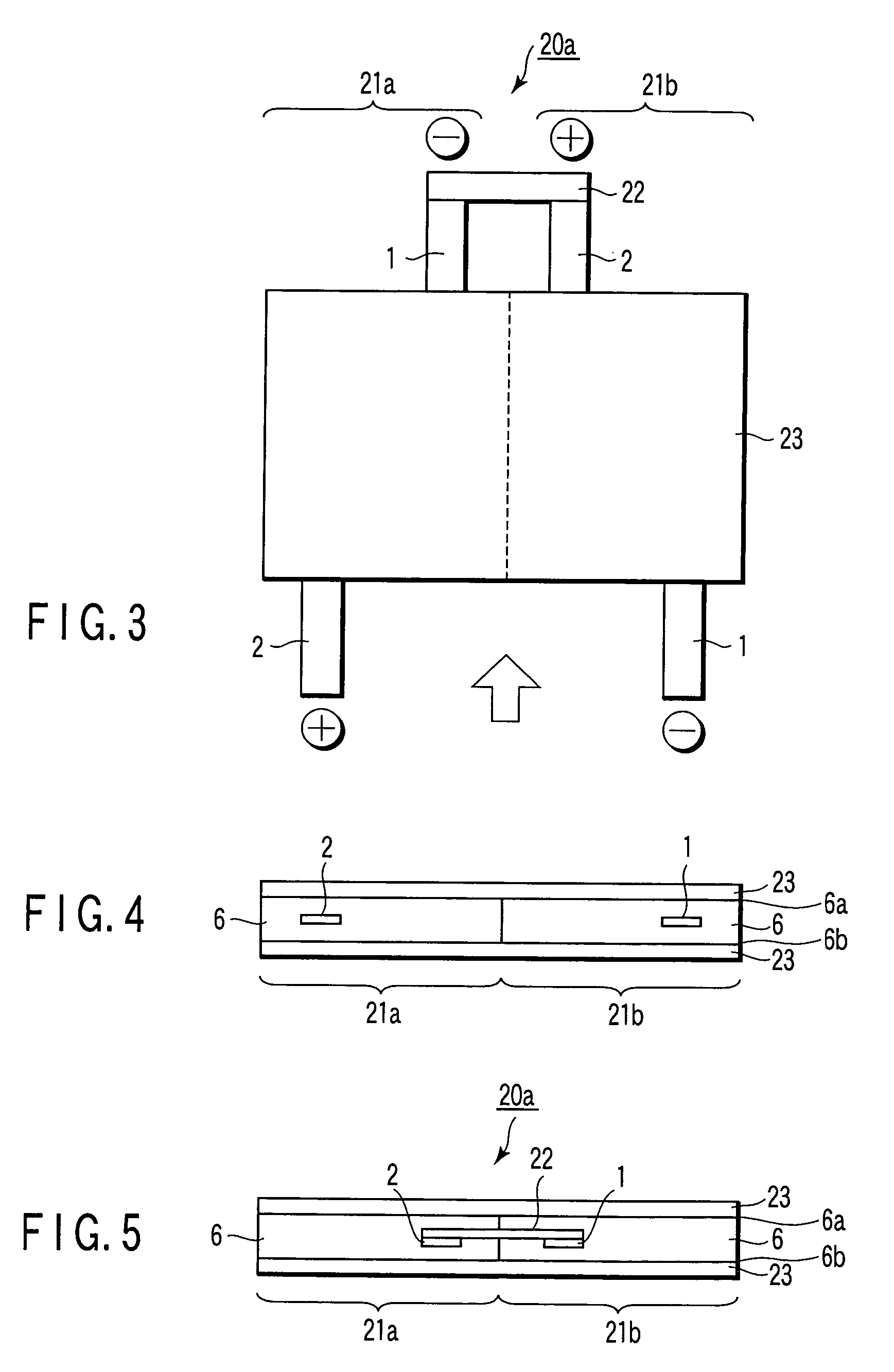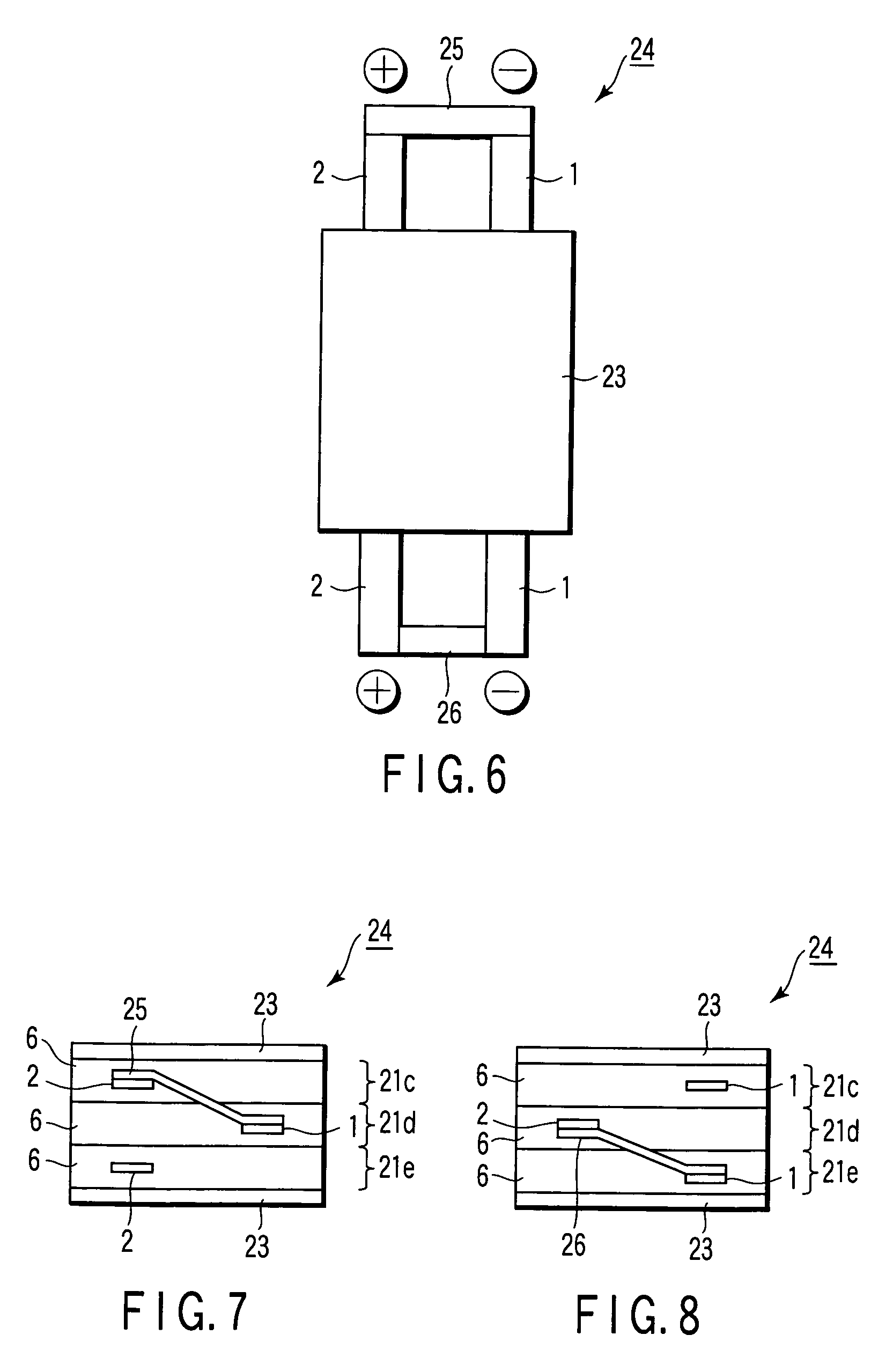Nonaqueous electrolyte secondary battery and battery module
a secondary battery and nonaqueous electrolyte technology, applied in the direction of non-aqueous electrolyte cells, cell components, sustainable manufacturing/processing, etc., can solve the problems of sudden drop in discharge capacity, difficult to increase the capacity and low energy density of nonaqueous electrolyte secondary batteries provided with protective circuit boards. , to achieve the effect of high discharge rate and excellent battery capacity characteristics
- Summary
- Abstract
- Description
- Claims
- Application Information
AI Technical Summary
Benefits of technology
Problems solved by technology
Method used
Image
Examples
example 1
[0111]By blending lithium titanate (Li4Ti5O12) powder having an average primary particle size of 5 μm and Li intercalating potential of 1.55V (vs. Li / Li+) as an active material, carbon powder with an average particle size of 0.4 micron as a conductive agent, and polyvinylidene fluoride (PVdF) as a binder by a ratio of 90:7:3 by weight, the mixture was dispersed in an n-methylpyrrolidone (NMP) solvent, and a slurry was prepared.
[0112]For measurement of primary particle size of the active material, a Laser Diffraction Particle Size Analyzer (model SALD-300 of Shimadzu Corporation) was used. About 0.1 g of a sample was put in a beaker, and a surfactant and 1 to 2 mL of distilled water were added, and was stirred sufficiently, and poured into a stirring tank. Light intensity distribution was measured 64 times at intervals of 2 seconds each, the particle size distribution data was analyzed, and the particle size of cumulative frequency distribution of 50% (D50) was obtained as the averag...
examples 2 and 3
[0121]Nonaqueous electrolyte secondary batteries having the same structure as in Example 1 were manufactured except that the average primary particle size of the negative electrode active material and negative electrode density differed, as shown in Table 1. Examples 1 to 3 are intended to investigate the effect of average primary particle size of lithium titanate.
examples 4 to 7
[0122]Nonaqueous electrolyte secondary batteries having the same structure as in Example 3 were manufactured except that the average crystal grain size of the negative electrode current collector and negative electrode density differed, as shown in Table 1. Examples 3 to 7 are intended to investigate the effect of average crystal grain size of Al.
PUM
| Property | Measurement | Unit |
|---|---|---|
| crystal grain size | aaaaa | aaaaa |
| crystal grain size | aaaaa | aaaaa |
| particle size | aaaaa | aaaaa |
Abstract
Description
Claims
Application Information
 Login to View More
Login to View More - R&D
- Intellectual Property
- Life Sciences
- Materials
- Tech Scout
- Unparalleled Data Quality
- Higher Quality Content
- 60% Fewer Hallucinations
Browse by: Latest US Patents, China's latest patents, Technical Efficacy Thesaurus, Application Domain, Technology Topic, Popular Technical Reports.
© 2025 PatSnap. All rights reserved.Legal|Privacy policy|Modern Slavery Act Transparency Statement|Sitemap|About US| Contact US: help@patsnap.com



